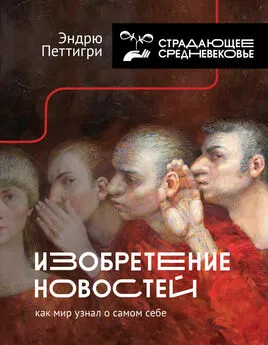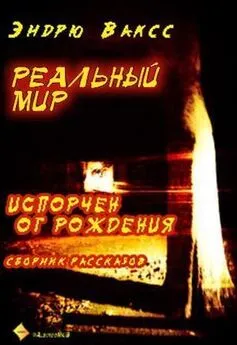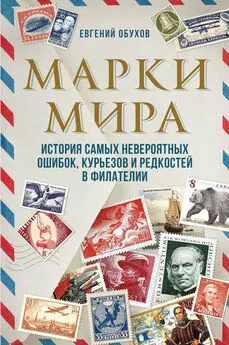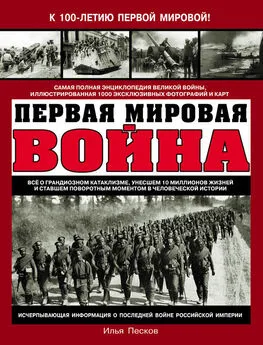Эндрю Петтигри - Изобретение новостей. Как мир узнал о самом себе
- Название:Изобретение новостей. Как мир узнал о самом себе
- Автор:
- Жанр:
- Издательство:АСТ
- Год:2021
- Город:Москва
- ISBN:978-5-17-127024-7
- Рейтинг:
- Избранное:Добавить в избранное
-
Отзывы:
-
Ваша оценка:
Эндрю Петтигри - Изобретение новостей. Как мир узнал о самом себе краткое содержание
Автор охватывает период почти в четыре века — от допечатной эры до 1800 года, от конца Средневековья до Французской революции, детально исследуя инстинкт людей к поиску новостей и стремлением быть информированными. Перед читателем открывается увлекательнейшая панорама столетий с поистине мульмедийным обменом, вобравшим в себя все доступные средства распространения новостей — разговоры и слухи, гражданские церемонии и торжества, церковные проповеди и прокламации на площадях, а с наступлением печатной эры — памфлеты, баллады, газеты и листовки. Это фундаментальная история эволюции новостей, начиная от обмена манускриптами во времена позднего Средневековья и до эры триумфа печатных СМИ.
В формате PDF A4 сохранен издательский макет.
Изобретение новостей. Как мир узнал о самом себе - читать онлайн бесплатно ознакомительный отрывок
Интервал:
Закладка:
463
Dahl, Dutch Corantos, pp. 23-6.
464
Dahl, ‘Amsterdam, Earliest Newspaper Centre’, pp. 190-91.
465
Там же, с. 185–6.
466
Там же, с. 161–198 и ниже, глава 14.
467
Michiel van Groesen, ‘A Week to Remember: Dutch Publishers and the Competition for News from Brazil, 26 August-2 September 1624’, Quaerendo, 40 (2010), pp. 26–49.
468
Paul Arblaster, ‘Current Affairs Publishing in the Habsburg Netherlands, 1620–1660’ (Oxford University DPhil dissertation, 1999); Leon Voet, ‘Abraham Verhoeven en de Antwerpse pers’, De Gulden Passer, 31 (1953), pp. 1-37. See also, most recently, Stephane Brabant, L’imprimeur Abraham Verhoeven (1575–1652) et les debuts de la presse ‘belge’ (Paris: A.E.E.F, 2009).
469
See Christiaan Schuckman, Hollstein’s Dutch and Flemish Etchings, Engravings and Woodcuts, ca. 1450–1700, vol. XXXV (Roosendaal: van Poll, 1990), pp. 217-26, nos 2–5.
470
Brabant, Verhoeven, p. 281.
471
Dahl, The Birth of the European Press , p. 18.
472
Augustus, 1621, 112. Tijdinghe wt Weenen, ende hoe dat het doodt lichaem… van Bucquoy, binnen… Weenen op chrijschmaniere… is ghebrocht, ende in baren ghestelt, inde kercke vande minimen. Copies in Antwerp, Heritage Library: B 17885: II, 112, and London, British Library: PP.3444 af (269).
473
Paul Arblaster, Antwerp and the World: Richard Verstegen and the International Culture of Catholic Reformation (Louvain: Louvain University Press, 2004).
474
Andrew Pettegree, ‘Tabloid Values: On the Trail of Europe’s First News Hound’, in Richard Kirwan and Sophie Mullins (eds), Specialist Markets in the Early Modern Book World (Leiden: Brill, 2014).
475
Paul Arblaster, ‘Policy and Publishing in the Habsburg Netherlands, 1585–1690’, in Brendan Dooley and Sabrina Baron (eds), The Politics of Information in Early Modern Europe (London: Routledge, 2001), p. 185.
476
Lisa Ferraro Parmelee, Good Newes from Fraunce: French Anti-League Propaganda in Late Elizabethan England (Rochester, NY: University of Rochester Press, 1996).
477
I. Atherton, ‘The Itch Grown a Disease: Manuscript Transmission of News in the Seventeenth Century’, in Joad Raymond, News, Newspapers, and Society in Early Modern Britain (London: Cass, 1999). William S. Powell, John Pory, 1572–1636: The Life and Letters of a Man of Many Parts (Chapel Hill, NC: University of North Carolina Press, 1976).
478
Folke Dahl, A Bibliography of English Corantos and Periodical Newsbooks, 1620–1642 (London: Bibliographical Society, 1952), nos 1-16 (with illustrations). Dahl, Birth of the European Press, p. 29. See STC 18507.1-17.
479
Dahl, Birth of the European Press; STC 18507.18–25 (Amsterdam: Jansz.; or London for Thomas Archer). STC 18507.29–35 (London: N. Butter).
480
STC 18507.35–81.
481
Dahl, Bibliography , nos 80 ff.
482
Illustrated Dahl, Birth of the European Press, p. 30.
483
Nicholas Brownlees, Corantos and Newsbooks: Language and Discourse in the First English Newspapers (1620–1641) (Pisa: Ets, 1999); Nicholas Brownlees, The Language of Periodical News in Seventeenth-Century England (Newcastle: Cambridge Scholars, 2011).
484
C. John Sommerville, The News Revolution in England: Cultural Dynamics of Daily Information (Oxford: Oxford University Press, 1996), p. 26.
485
Там же.
486
Jason Peacey and Chris R. Kyle, Breaking News: Renaissance Journalism and the Birth of the Newspaper (Baltimore, MD: Johns Hopkins University Press, 2009), p. 55: ‘I send you here enclosed the Currantos that are come out since my last letter, which is in effect all our present foreign news.’
487
Michael Frearson, ‘The Distribution and Readership of London Corantos in the 1620s’, in Robin Myers and Michael Harris (eds), Serials and their Readers, 1620–1914 (Winchester: St Paul’s Bibliographies, 1993), p. 17.
488
Thomas Cogswell, ‘“Published by Authoritie”: Newsbooks and the Duke of Buckingham’s Expedition to the Ile de Re’, Huntington Library Quarterly, 67 (2004), pp. 1-26, here p. 4.
489
В оригинале: ‘1. To settle a way when there shall be any revolt or back sliding in matters of religion or obedience (which commonly grows with rumours among the vulgar) to draw them in by the same lines that drew them out, by spreading among them such reports as may best make for that matter to which we would have they drawn. 2. To establish a speedy and ready way whereby to disperse in the veins of the whole body of a state such matter as may best temper it, and be most agreeable to the disposition of the head and principal members. 3. To devise means to raise the spirits of the people and to quicken their concepts… It extends the sense by degrees to the concept of the right rules of reason, whereby they are wrought easily to obey those which by those rules shall command them.’ Powell, Pory (1976), p. 52.
490
Thomas Cogswell, ‘“Published by Authoritie”’.
491
Там же, с. 14.
492
Frearson, ‘London Corantos’, p. 3.
493
Jayne E. E. Boys, London’s News Press and the Thirty Years War (Woodbridge: Boydell, 2011).
494
Jeffrey K. Sawyer, Printed Poison: Pamphlet Propaganda, Faction Politics, and the Public Sphere in Early Seventeenth-Century France (Berkeley, CA: University of California Press, 1990).
495
Christian Jouhaud, ‘Printing the Event: From La Rochelle to Paris’, in Roger Chartier (ed.), The Culture of Print: Power and Uses of Print in Early Modern Europe (Princeton, NJ: Princeton University Press, 1989), pp. 290–333.
496
Dahl, Birth of the European Press , pp. 23-4.
497
Gilles Feyel in Jean Sgard, Dictionnaire des Journaux 1600–1789 (Paris: Universitas, and Oxford: Voltaire Foundation, 1991), pp. 967-70.
498
Howard M. Solomon, Public Welfare, Science, and Propaganda in Seventeenth-Century France: The Innovations of Theophraste Renaudot (Princeton, NJ: Princeton University Press, 1972); Christian Bailly, Theophraste Renaudot: un homme d’influence au temps de Louis XIII et de la Fronde (Paris: Le Pre aux Clercs, 1987).
499
Gilles Feyel, L’annonce et la nouvelle. La presse d’information en France sous l’ancien regime (1630–1788) (Oxford: Voltaire Foundation, 2000), pp. 131-90.
500
Solomon, Public Welfare , p. 126.
501
Там же, с. 129; see also idem, ‘The Gazette and Antistatist Propaganda: The Medium of Print in the First Half of the Seventeenth Century’, Canadian Journal of History, 9 (1974), pp. 1-17.
502
Feyel, L’annonce et la nouvelle, pp. 476–503.
503
C. Moreau, Bibliographie des Mazarinades (Paris: Societe de l’histoire de France, 1850-51).
504
Remerciment des imprimeurs a monseigneur le Cardinal Mazarin (N. Boisset, 1649), p. 4; Moreau, Mazarinades , no. 3,280.
505
Avis burlesque du cheval de Mazarin a son maitre (Paris: veuve Musnier, 1649); Moreau, Mazarinades , no. 494.
506
Moreau, Mazarinades, nos 811–835 (Courier), 1,466-1,472 (Gazette), 1,740-1,764 (Journal), 2,451-2,457 (Mercury).
507
Le gazettier des-interresse (Paris: Jean Brunet, 1649), sig. B2r; Moreau, Mazarinades, no. 1,466.
508
Moreau, Mazarinades , no. 830.
509
Там же, с. 249–50, H. Carrier, La Presse de la Fronde (1648–1653): les Mazarinades (Paris: Droz, 1989), I, 188–189.
510
Moreau, Mazarinades , no. 718.
511
Ниже, глава 11; Stephane Haffemayer, L’information dans la France du XVIIe siecle: La Gazette de Renaudot de 1647 a 1663 (Paris: Champion, 2002).
512
Filippo de Vivo, Information and Communication in Venice: Rethinking Early Modern Politics (Oxford: Oxford University Press, 2007).
513
Quoted Brendan Dooley, The Social History of Skepticism: Experience and Doubt in Early Modern Culture (Baltimore, MD: Johns Hopkins University Press, 1999), p. 34.
514
Там же, Filippo de Vivo, ‘Paolo Sarpi and the Uses of Information in Seventeenth-Century Venice’, Media History, 11 (2005), pp. 37–51.
515
Dooley, Skepticism , p. 54.
516
Там же, с. 42.
517
Там же, с. 46.
518
Johannes Weber, ‘Der grosse Krieg und die fruhe Zeitung. Gestalt und Entwicklung der deutschen Nachrichtenpresse in der ersten Halfte des 17. Jahrhunderts’, Jahrbuch fur Kommunikationsgeschichte, 1 (1999), pp. 23–61, here p. 25.
519
Karl Heinz Kremer, Johann von den Birghden, 1582–1645. Kaiserlicher und koniglich-schwedischer Postmeister zu Frankfurt am Main (Bremen: Lumiere, 2005); idem, ‘Johann von den Birghden, 1582–1645’, Archiv fur deutsche Postgeschichte (1984), pp. 7-43.
520
Esther-Beate Korber, ‘Deutschsprachige Flugschriften des Dreissigjahrigen Krieges 1618 bis 1629’, Jahrbuch fur Kommunikationsgeschichte, 3 (2001), pp. 1-37.
521
Weber, ‘Der grosse Krieg und die fruhe Zeitung’, p. 25: the victims were described as Herr Slawata, Herr Schmozonsky, and Herr Philip P, Secretarius.
522
Там же, с. 29.
523
Else Bogel and Elgar Bluhm, Die deutschen Zeitungen des 17. Jahrhunderts. Ein Bestandverzeichnis , 2 vols (Bremen: Schunemann, 1971); Else Bogel and Elgar Bluhm, Nachtrag (Munich: Saur, 1985), vol. I, pp. 48–51; II, pp. 50–51.
524
Johannes Weber, ‘Kontrollmechanismen im deutschen Zeitungswesen des 17. Jahrhunderts’, Jahrbuch fur Kommunikationsgeschichte, 6 (2004), pp. 56–73.
Читать дальшеИнтервал:
Закладка:










